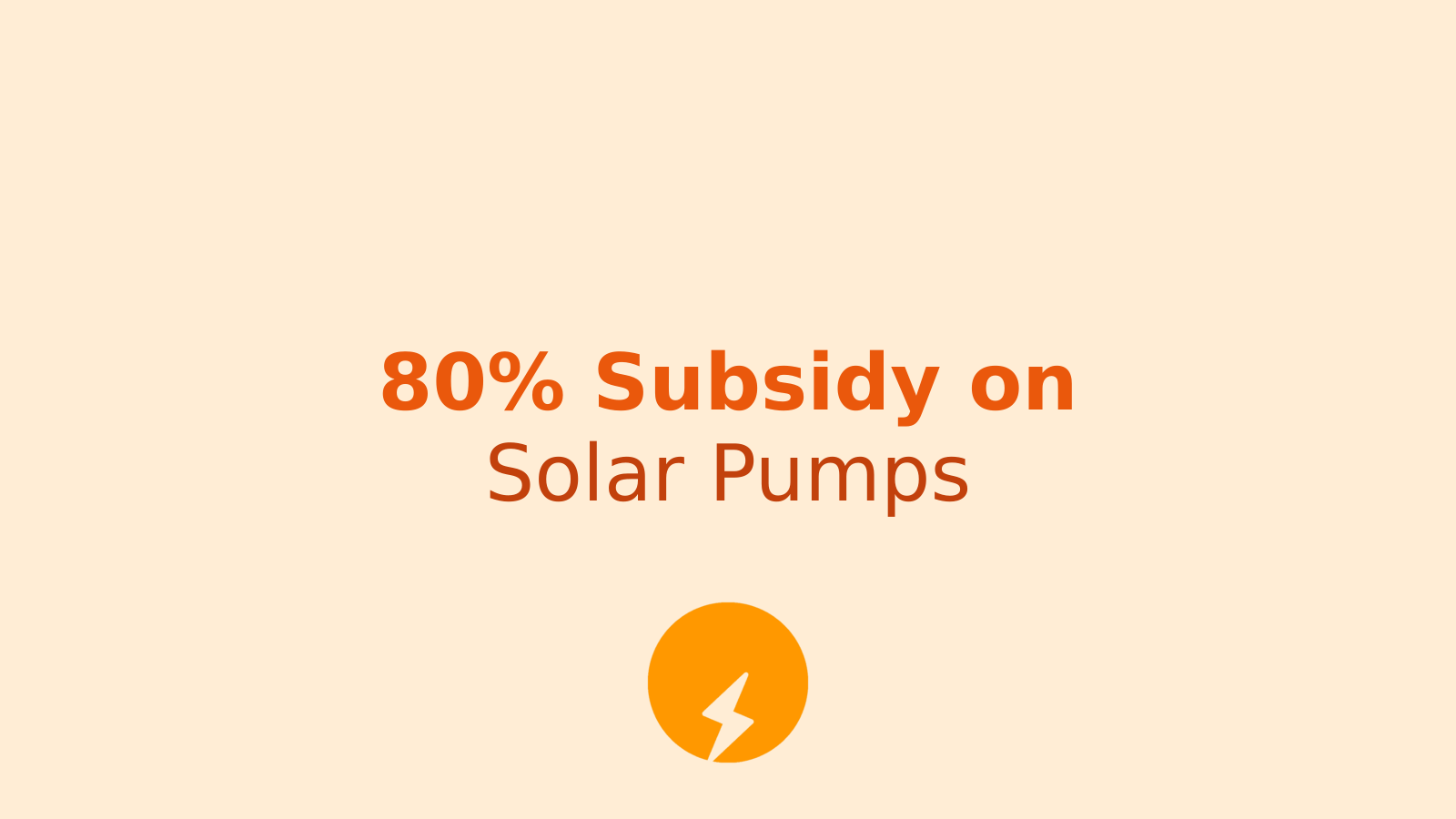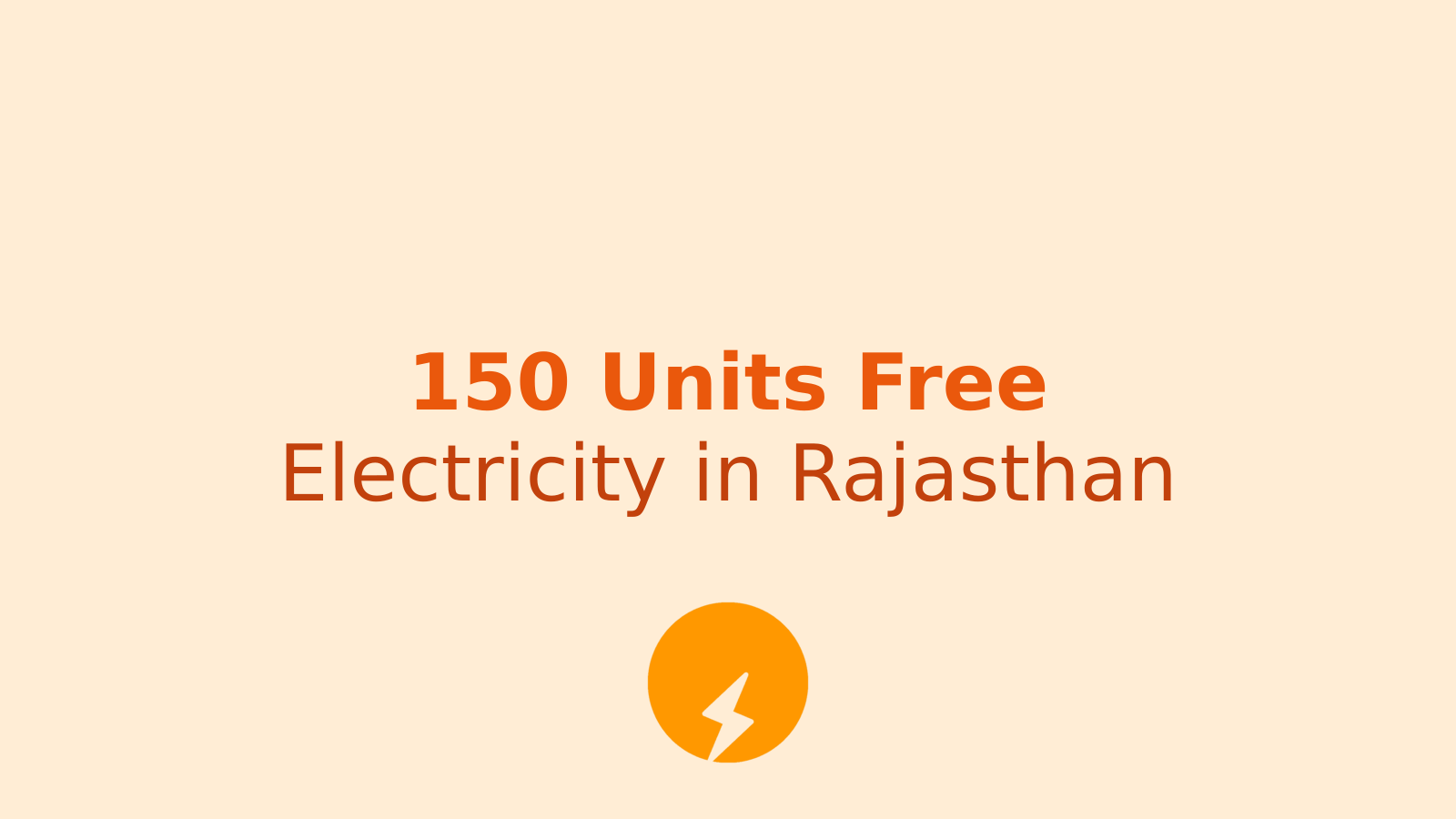If you're a farmer in Rajasthan, especially in the Banswara district, I've got some fantastic news that will put a big smile on your face! The central government has just announced a significant reduction in GST rates for renewable energy equipment, and this means solar pumps are about to become much more affordable. Let's dive into what this means for you and your farm.
The Big Announcement: GST Cut on Solar Equipment
The central government has reduced the Goods and Services Tax (GST) on renewable energy devices from 12% to a mere 5%. Now, you might be thinking, "That's just a 7% difference, how much can that really save me?" Well, hold onto your hats, because the numbers are quite impressive!
This direct reduction in GST brings down the total cost of solar systems by approximately 7%, and this saving directly impacts the pockets of common people and farmers. For those living in tribal areas where electricity has been a persistent problem for years, this scheme could prove to be nothing short of a blessing.
Real Savings: Let's Talk Numbers
According to officials from the Agriculture Department, the savings are substantial and vary based on the horsepower of the solar pump you choose. Here's the breakdown that will make your day:
For a 5 Horsepower Solar Pump
If you're planning to install a 5 HP solar pump under the Pradhan Mantri Surya Ghar Muft Bijli Yojana, you can now save a whopping ₹17,500 directly due to this GST reduction! That's not pocket change – it's a significant amount that can be used for other farming needs.
For a 3 Horsepower Solar Pump
Even if you opt for a smaller 3 HP pump, you're still looking at savings of approximately ₹4,000 in the farmer's share. Every rupee counts when you're running a farm, and these savings can make a real difference.
Why This Matters for Banswara and Tribal Regions
Let me be honest with you – electricity shortage is no joke for farmers. In many parts of Banswara and other tribal areas, farmers have been struggling with irregular power supply for years. This problem has a domino effect: no electricity means no irrigation, which means crops don't get adequate water, which ultimately means farmers cannot harvest their full potential yield.
It's a heartbreaking situation when you've put in all that hard work, invested your money and time, but can't reap the complete benefits simply because of power shortage. Solar pumps offer a solution to this age-old problem, and now with reduced prices, they're more accessible than ever.
Official Orders Have Been Issued
The Horticulture Commissioner's office has already issued orders regarding this price reduction. These orders specify which categories of farmers will receive what amount of assistance, how much the government will contribute, and importantly, that the benefits of this scheme will be provided from September 22 onwards.
Dal Singh Garasiya, Deputy Director of the Industry Department, confirmed that departmental orders have been received and implementation has begun immediately. The department is actively sharing this information with farmers to ensure maximum benefit.
Understanding the PM Surya Ghar Muft Bijli Yojana
This scheme isn't just about cheaper solar pumps – it's part of a larger vision to make farming more sustainable and profitable. Under the Pradhan Mantri Surya Ghar Muft Bijli Yojana, farmers can get subsidised solar pumps that will help them irrigate their fields without depending on the irregular grid power supply.
Think about it – with a solar pump, you're essentially getting your own personal power station that runs on sunlight. No more waiting for electricity, no more worrying about power cuts during crucial irrigation periods. You become self-reliant, and isn't that what we all want?
The Bigger Picture: Making Irrigation Affordable
Water is life, especially for a farmer. Getting water to your fields at the right time can mean the difference between a bumper crop and a disappointing harvest. Until now, many farmers relied on diesel pumps, which are expensive to run, or on erratic grid electricity.
Solar pumps change this equation completely. Yes, there's an initial investment, but with the government subsidy and now the reduced GST rates, that investment has become much more manageable. And once installed, the running cost is practically zero – the sun doesn't send you a bill!
How to Avail This Benefit
If you're excited about getting a solar pump (and you should be!), here's what you need to know:
- Contact your local agriculture department: They have all the details about the application process and can guide you through the paperwork.
- Understand the subsidy structure: The government provides a significant subsidy, and you only need to pay a portion of the total cost.
- Choose the right capacity: A 3 HP pump might be sufficient for smaller farms, while larger holdings might benefit from a 5 HP pump.
- Get your documents ready: Like any government scheme, you'll need to provide land documents, identity proof, and bank details.
Why Act Now?
Here's my advice – don't wait. Government schemes and benefits can change, and it's always best to take advantage when the opportunity is ripe. With the GST reduction in effect and the scheme actively being promoted, this is the perfect time to invest in a solar pump for your farm.
Plus, think about the upcoming farming seasons. Wouldn't it be wonderful to have your own reliable water source ready when your crops need it most? No more anxiety about power cuts, no more running after electricity department officials, no more fuel costs eating into your profits.
The Environmental Bonus
While we're talking about savings and convenience, let's not forget the environmental benefit. Solar pumps are clean energy devices. They don't emit smoke, they don't pollute, and they don't contribute to noise pollution. By choosing solar, you're not just helping your farm – you're helping the planet.
And honestly, isn't it satisfying to know that you're farming in a way that's sustainable for future generations? Your children and grandchildren will farm on the same land, and by making environment-friendly choices today, you're ensuring they have a healthier planet tomorrow.
Common Questions Answered
Will the solar pump work on cloudy days?
Modern solar pumps are quite efficient and can work even with indirect sunlight, though at reduced capacity. Most systems also come with battery backup options for continuous operation.
How long do solar pumps last?
With proper maintenance, a good quality solar pump can easily last 20-25 years. The solar panels themselves often come with warranties of 25 years or more.
Is maintenance expensive?
Not at all! Solar pumps have very few moving parts, which means less wear and tear. Basic cleaning of solar panels and occasional checks are usually sufficient.
Final Thoughts
This GST reduction on solar pumps is genuinely good news for the farming community. In a sector where margins are often tight and weather uncertainty is always looming, anything that reduces costs and increases reliability is welcome.
The government's push towards renewable energy in agriculture makes perfect sense. Farming and nature have always been partners, and solar energy is just another way to strengthen that partnership. With these reduced prices, solar irrigation is no longer a luxury – it's becoming an accessible, practical solution for farmers across Rajasthan.
So if you've been sitting on the fence about getting a solar pump, this is your sign to jump off and take action. Contact your local agriculture department, get the details, and take advantage of this opportunity. Your farm deserves reliable irrigation, and you deserve peace of mind.
Remember, successful farming isn't just about hard work – it's also about making smart decisions at the right time. And right now, with reduced GST rates and government support, investing in a solar pump might just be one of the smartest decisions you can make for your farm's future.
Here's to better irrigation, better yields, and better profits! May your fields always be green and your harvests always be bountiful!
Read more articles in News & Updates Category or in Oct 2025 Month





